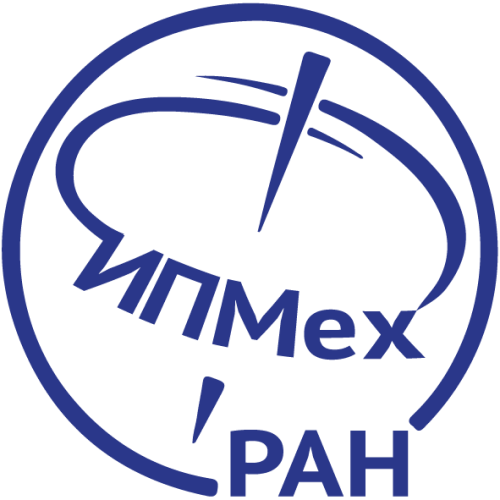Laboratory of the Interplanetary Environment
Publications
173
Citations
5 292
h-index
37
Laboratory doesn't accept messages.
The main area of research conducted in the laboratory is space gas dynamics - the construction of gas-dynamic, magnetohydrodynamic, kinetic models of astrophysical phenomena and the analysis of experimental data based on them.
The priority area is the study of the heliosphere (the area of outer space occupied by the solar wind) and the astrospheres of others, as well as their interaction with the surrounding interstellar medium.
- Analytical methods, numerical modeling, programming
- Analysis of data received from spacecraft

Konstantin Krasnobaev
Principal researcher

Michael Ruderman
Leading researcher

Dmitry Alexashov
Senior Researcher
Egor Godenko
Junior researcher

Sergey Korolkov
Junior researcher

Anastasia Titova
PhD student
Research directions
The effect of thermal conductivity on the structure of the heliosphere
+
For more than 10 years (since 2012, when Voyager -1 crossed the heliopause), one of the main unsolved problems in the physics of the outer heliosphere has been the problem of the thickness of the heliospheric shock layer – the region between the heliospheric shock wave and the heliopause. The thickness of the impact layer in the direction of Voyager 1 was about ~ 30 au, when in all the main models of the global structure of the heliosphere this thickness was about 50-70 au. The first explanations of the difference between theory and experiment were associated with non-stationary processes (solar cycle, instabilities). However, nonstationary modeling, as well as new data obtained on Voyagers, have shown that nonstationary effects cannot explain such significant discrepancies in the thickness of the shock layer. It became clear that it was necessary to look for a physical process that would lead to a decrease in the thickness of the impact layer. In Izmodenov et al. (2014), it was proposed that a decrease in the thickness of the shock layer is associated with the effect of electronic thermal conductivity, which allows thermal energy to be carried away from the frontal part to the tail region of the heliosphere along magnetic lines of force. In a 2014 paper, the effect was demonstrated within the framework of a simple "toy" model of an isothermal gas. The importance of accounting for electronic thermal conductivity was accepted by the heliospheric community, but the task has been waiting for its solution for a little less than 10 years. The complexity of the task is related to the difference (by many orders of magnitude) between the characteristic time of thermal conductivity and other characteristic times of the tasks. In 2023, Izmodenov & Alexashov, MNRAS, 2023, presented the first results obtained within the framework of a three-dimensional kinetic-magnetohydrodynamic model of the global heliosphere, taking into account the effects of thermal conductivity. The paper considered anisotropic thermal conductivity in which heat fluxes along the magnetic field lines prevail. Since the plasma parameters (solar wind and interstellar medium) vary significantly in different regions of the heliosphere, the model allows using both classical and saturated heat fluxes. The presented numerical model is unique, as it includes a self-consistent solution of the equations of magnetic hydrodynamics with a kinetic equation for hydrogen atoms and an equation of heat influx taking into account anisotropic thermal conductivity. The novelty of the numerical methods used consists in using the Yanenko method of splitting by physical processes, as well as an implicit method for solving the thermal conductivity equation written along the magnetic field lines. 7. The results obtained and their significance: The presented results confirm the preliminary estimates of the effect of thermal conductivity on the plasma flow in the inner heliospheric layer. It is shown that thermal conductivity significantly changes the shapes of the heliopause and the heliospheric shock wave. The thickness of the heliospheric shock layer decreases significantly (twice at the poles). This is the desired effect (and the main result of the work!), because it helps to match the thickness obtained in the model with the Voyager data. Two additional (and not expected in advance) results were also obtained within the framework of the model: 1) a strong decrease in the plasma temperature of the solar layer in the direction of the heliopause. The decrease is so strong that the temperature of the solar wind in the vicinity of the heliopause becomes lower than the interstellar one. We explain this decrease by the combined effect of thermal conductivity and magnetic field; 2) an increase in the temperature of electrons in the supersonic solar wind before the heliospheric shock wave. This increase is due to heat transfer from the inner shock layer. The last result is a "prediction for the future", since there is no experimental data on measurements of the temperature of electrons in the outer heliosphere. At the same time, this result makes it possible to clearly determine the further path of development of the global heliosphere model – taking into account the multicomponence of the solar wind, as well as the processes associated with the dissipation of the magnetic field in the vicinity of the heliopause.
Publications and patents
Found
Nothing found, try to update filter.
2019
—
2021
| Измоденов Владислав Валерьевич
2014
—
2016
| Измоденов Владислав Валерьевич
Lab address
Москва, ул. Профсоюзная, 84/32
Laboratory doesn't accept messages.







